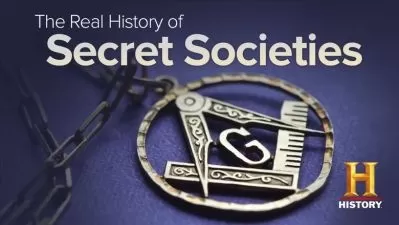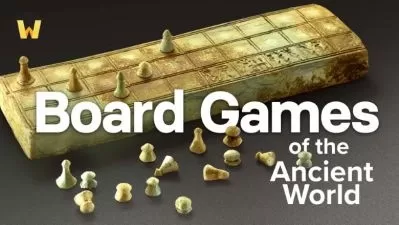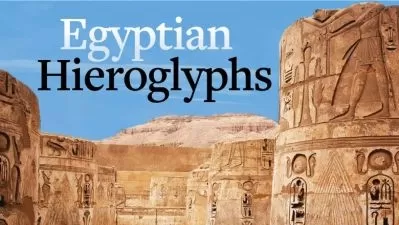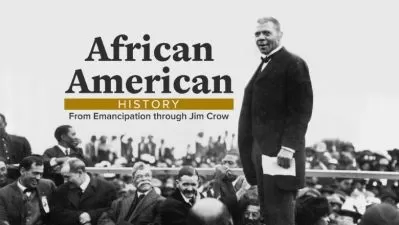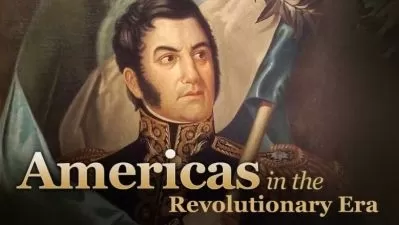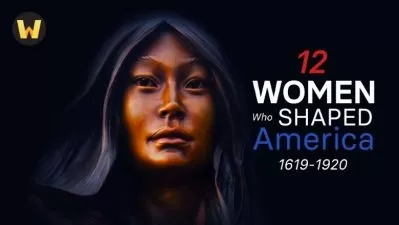The Great Tours: Civil War Battlefields
Taught By Multiple Professors
7:32:34
Description
On October 3, 1889, a 42-gun salute rang out from the national cemetery at Gettysburg. Addressing the crowd gathered at one of the most important battlefields of the American Civil War, General Joshua L. Chamberlain observed, “In great deeds something abides. On great fields something stays.”
In the decades following the Civil War, the number of monuments dedicated on the war’s battlefields rapidly increased. But as the number of monuments increased, so did the meaning of the fields. Veterans came to honor the sacrifices made by their comrades, to celebrate their own valor, to mark the lines of battle, and to try and arrive at moments of reconciliation. Even today, tourists from across the country (and the world) come to Civil War battlefields to learn how such battles were waged—and how historical participants made meaning of such horrible violence and killing.
No book can capture what it meant at that time to stand along the crest of Marye’s Heights in Fredericksburg and look down upon the vast plain stretching to the Rappahannock River. No speech can evoke the spectacle of the crater at Petersburg, where Union troops exploded four tons of powder under Confederate lines, or the intensity of the scene at the parlor of the McLean House at Appomattox Court House, where Robert E. Lee surrendered to Ulysses S. Grant. To see the ground and the locations where such momentous events in American history occurred, to stand on them with your own two feet, helps to make clearer sense of the war that tore a nation apart.
Noted Civil War historians Caroline E. Janney, the John L. Nau III Professor in History of the American Civil War at the University of Virginia, and Peter S. Carmichael, the Robert C. Fluhrer Professor of Civil War Studies at Gettysburg College, know all too well the power of place in history. For them, battlefields are a veritable extension of the classroom. They afford unique opportunities to answer a host of questions, such as:
- Why did Civil War soldiers fight the way they did?
- What tactical philosophies did commanders employ?
- How did soldiers make sense of what unfolded around them?
- How did individual experiences shape the nature of the war?
In The Great Tours: Civil War Battlefields, these two renowned experts invite you to join them on the virtual battlefield for an examination of how the Civil War was fought. In 15 lectures, presented in chronological order of the timeline of the battles, you’ll visit 11 sites that take you to a greater understanding of many of the war’s renowned campaigns. It’s an immersive tour of the places and moments that show the viewer what was happening during each battle and the objectives for the battle, while also explaining how the military engagement fit into the overall strategy of the campaign. Whether you’re well-versed in Civil War battles or entirely new to this period of history, The Great Tours: Civil War Battlefields offers fresh insights and new stories to review.
Walk the Landscape of the Civil War
More than all the letters, memoirs, and newspaper reports tracing the events of the Civil War, it’s the battlefields themselves, where Union and Confederate soldiers fought and died, that best connect us to a war that tested the promise of democracy and ensured both the end to slavery and the preservation of the Union. The wins and losses—and near defeats and all-out routs—were either shaped by the politics of the area or, in turn, helped shaped them.
The Great Tours: Civil War Battlefields focuses on the unique role of the Eastern Theater in the conflict, stretching from Virginia into Maryland and southern Pennsylvania. It served as the geographic area in which the Army of the Potomac, the major Union Army of the Eastern Theater, and the Army of Northern Virginia, of the Confederate States of America, fought.
Throughout these lectures, you’ll join Professors Janney and Carmichael on virtual walks through key locations at some of the war’s most iconic battlefields.
- Bull Run: The war’s first major battle took place on July 21, 1861, 30 miles southwest of Washington at Manassas Junction, which, prior to the war, had been little more than a stop along the Orange & Alexandria Railroad and the Manassas Gap Railroad. That summer, however, the railroad junction took on important military significance for both sides as a convenient line over which to transport troops and supplies for the war effort. A second battle at this critical location would occur in late August 1862, when Confederate forces would once more drive the Union army from the field.
- Antietam: In September 1862, the Confederate army under General Robert E. Lee gathered on high ground near Sharpsburg, Maryland, above Antietam Creek. Despite his knowledge of Lee’s plans, Union officer General George B. McClellan let precious time slip by and waited to launch an attack, inadvertently allowing Lee time to get some 30,000 troops in place (with one division back in Harpers Ferry). The resulting battle, on terrain that obscured Confederate formations, is considered the bloodiest day in the entire Civil War.
- Gettysburg: What is perhaps the most iconic battle—and battlefield—of the Civil War is the topic of three lectures in The Great Tours: Civil War Battlefields. It’s an immersive experience that takes you through the landscape of what would become a redemptive moment for the Army of the Potomac, only days after General George Gordon Meade assumed command of it. You’ll also get the opportunity to walk along one of the most important infantry assaults in American history: Pickett’s Charge.
- Petersburg: In the trenches surrounding this Virginia city, General Ulysses S. Grant had General Robert E. Lee’s Army of Northern Virginia cornered in the early summer of 1864. A promising end to the stalemate came in late July, when a Pennsylvania regiment tunneled more than 500 feet from behind Union lines to place four tons of black powder under the Confederate position. The massive explosion tore open the Confederate lines, but a bungling Union attack failed to exploit the opportunity.
Hear Hallowed Stories from Hallowed Ground
One way that historians can better understand the nature of war is through the words and experiences of the soldiers who survived the fighting at battlefields. Throughout The Great Tours: Civil War Battlefields, you’ll hear stories from the individuals who walked the hallowed grounds of the Eastern Theatre of the Civil War.
As an example, from the recollections of a survivor of the Confederate bombardment at Gettysburg, a soldier wrote that the enemy fire was “terrible beyond description; the air was full of shell hissing and bursting. They came so thick and fast there was no dodging them.”
In another example, a soldier from South Carolina described the scene at the Battle of Spotsylvania Court House: “The trenches, dug on the inner side, were almost filled with water. Dead men lay on the surface of the ground and in the pools of water. The wounded bled and groaned, stretched or huddled in every attitude of pain. The water was crimsoned with blood.”
These and other personal experiences testify to the horrors of war and add more layers of realism to what you’ll learn about in these lectures.
Make Lasting Sense of America’s Bloodiest War
As Professor Janney and Professor Carmichael guide you through The Great Tours: Civil War Battlefields, you will gain a better understanding of the battles that took place on the American soil of the United States, the bloodiest war in US history. You will gain a deeper appreciation for all that was lost and won by the soldiers who fought in the Civil War. Because of these historians, you’ll come away inspired to visit (or revisit) the country’s Civil War battlefields: the sunken lanes, commanding heights, and sweeping plains where so much violence occurred. Professor Janney and Professor Carmichael have each built their careers on researching the history of this epic conflict. As expressed in The Great Tours: Civil War Battlefields, their knowledge of the battles and the larger implications of the outcomes of the battles—outcomes which influenced the trajectory of the United States as a nation—makes this course more engaging and detailed than the self-guided tours at the battlefields, providing a great resource to watch before visiting in person.
More details
User Reviews
Rating
Taught By Multiple Professors
Instructor's CoursesCaroline Janney is the John L. Nau III Professor in History of the American Civil War and director of the John L. Nau III Center for Civil War History at the University of Virginia, where she received a PhD in History. She won the Gilder Lehrman Lincoln Prize for her book Ends of War: The Unfinished Fight of Lee’s Army after Appomattox.

The Great Courses
View courses The Great Courses- language english
- Training sessions 16
- duration 7:32:34
- English subtitles has
- Release Date 2023/05/09






